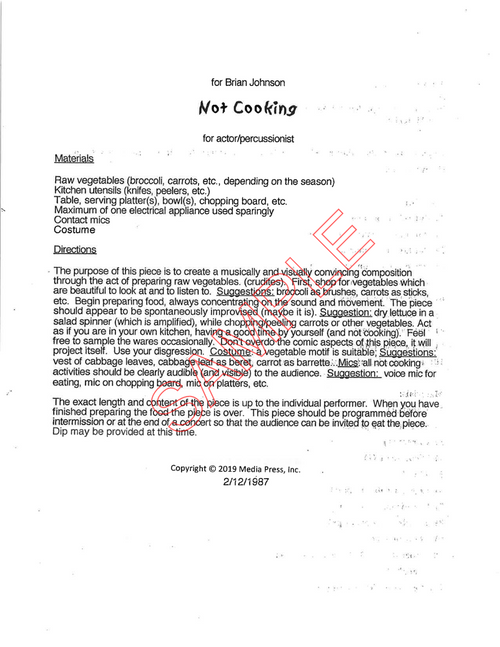A Rhythmic Sourcebook for Actors, Dancers, and Musicians
From the Introduction:
"A Rhythmic Sourcebook is intended to aid in the development of a performer's ability to realize movement and sound gestures (both pulsed and non-pulsed) within varied timespans. This book emphasizes the interpretive transformation of visual symbols into movement, text, and sound gestures."
Review from Percussive Notes (2022):
While it’s no secret that percussion and dance have gone together since the dawn of civilization (and likely before that!), it can be rare to see the combination of movement and sound notated in a precise, yet freely open, manner. Enter the Rhythmic Sourcebook, a creative, foundational guide to the marriage of movement and expression in music and dance.
Movement is explained with pictograms, with the shapes, sizes, and shading serving to generally notate speed and volume of the performer. Because this notation is more open-ended, the parameters for each symbol can be determined by the performers, resulting in creative interpretations by different people. The author states, “This Rhythmic Sourcebook presents symbols to be interpreted so that the interpreter/performer has wide latitude for creative input while gaining pulsed and non-pulsed rhythmic skills. My goal is that these symbols will not place stylistic strictures on the interpreter/performer. Instead, the symbols will serve as communicators, which elicit questions from the individual that will expand the knowledge, understanding, and performance possibilities of the rhythmic information.”
The author explains how he arrived at this notational system, recounts his inspirations for the notation, explains what the symbols can mean, and notes the relationship between different notational systems and their intent on performance (for example: typically, for Western notation, as an “exact-copy” of the intended sounds and instructions, rather than a space for creative interpretation).
As a musician and a teacher, I greatly appreciate the detail that Michael Udow includes, and it is very helpful to understand the thought processes and other methods that influenced and developed this incredible book. This fresh reprinting is clear, and adding it to a personal/ professional collection is a must.
—Cassie Bunting







